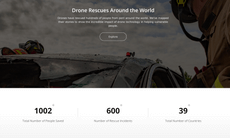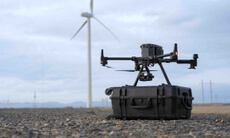DJI Drones Meet New Transport Canada Requirements For Flight Near People
DJI Customers May Fly Nine Popular Models Near People And In Controlled Airspace
May 29, 2019 – DJI, the world’s leader in civilian drones and aerial imaging technology, is pleased to declare that nine of its models meet the new Transport Canada requirements taking effect June 1 for drone flight within 30 meters (100 feet) of people. The new declaration, along with DJI’s previously declared compliance with new requirements for drone flight in controlled airspace, allows DJI customers to use their preferred drones for a variety of safe, responsible and beneficial uses across Canada.
“DJI customers choose our drones because they know our longstanding history of making powerful, reliable and dependable aerial platforms, and we are proud to say they can continue using our products under the new Transport Canada system beginning June 1,” said Javier Caina, DJI Director of Technical Standards. “We have put months of effort into documenting our safety expectations, testing standards, reliability guidelines and other processes to comply with Transport Canada’s new requirements. Thanks to this effort, we are able to confirm that our customers can continue flying DJI drones in controlled airspace and near people when the new rules take effect.”
Transport Canada announced its new regulatory framework for certain types of advanced civilian drone operations in January, requiring the use of drones whose manufacturer has declared that its drones meet reliability and operational characteristics under a safety assurance framework. DJI drones that can be used near people and in controlled airspace are the M600 Series, M200 Series, M200 V2 Series, Inspire 2, Mavic 2 series, Mavic Pro, Mavic Air, Phantom 4 series and Spark. The new declaration is expected to soon be reflected in Transport Canada’s list of drones eligible for advanced operations at this link.
DJI has long set the standard for safe operations in the drone industry, pioneering a series of technological improvements and educational systems to help ensure drones retain their admirable safety record. Most recently, DJI released “Elevating Safety,” its 10-point plan for government and industry to work together on keeping the skies safe in the drone age. As part of this effort, DJI will install AirSense, which warns drone pilots of nearby airplanes and helicopters, in all new drone models weighing more than 250 grams launched after Jan. 1, 2020. DJI will also create a new warning system for drone pilots flying at extended distances, and create an internal Safety Standards Group to document technical expectations and study performance results. More details on these initiatives are available at dji.com/flysafe.


